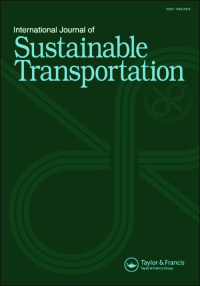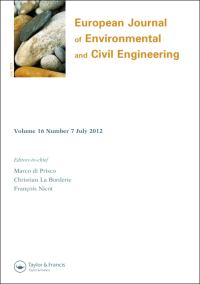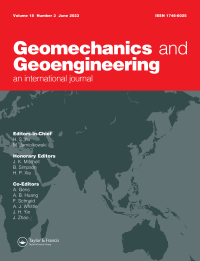Portfolio by the numbers
Offering a collection of books and journals written by experts in the field and through partnerships with institutions such as Resources for the Future, and The Stockholm Environment Institute, we aim to play an integral role in disseminating research to meet the needs of researchers and professionals in order to help improve the natural environment and develop solutions to environmental problems.
International Journal of Sustainable Transportation
The International Journal of Sustainable Transportation provides a discussion forum for the exchange of new and innovative ideas on sustainable transportation research in the context of environmental, economical, social, and engineering aspects, as well as current and future interactions of transportation systems and other urban subsystems.
European Journal of Environmental and Civil Engineering
The European Research Area has now become a reality. The prime objective of the EJECE is to fully document advances in International scientific and technical research in the fields of sustainable construction and soil engineering. In particular regard to the latter, the mechanical behavior of natural media (soils and rocks) in their environment and the mitigation of soil-related risks are now not only major societal challenges, but they are also the source of scientific and technical developments that could be extremely beneficial.
Geomechanics and Geoengineering
Geomechanics is concerned with the application of the principle of mechanics to earth-materials (namely geo-material). Geoengineering covers a wide range of engineering disciplines related to geo-materials, such as foundation engineering, slope engineering, tunneling, rock engineering, engineering geology and geo-environmental engineering.
Navigating the Complexity Across the Peace–Sustainability–Climate Security Nexus
Promoting peace and sustainability in human development while accounting for the risks associated with the impact of climate change on society has become more imperative than ever when addressing humanity's challenges of the twenty-first century. There is enough evidence that peace, sustainability, and climate security are entangled with multiple complex interactions and cannot be dealt with in isolation and independently from the environment and the numerous systems with which they interact. Yet, the intersection of peace, sustainability, and climate security or their opposites (i.e., conflict, unsustainability, and climate vulnerability) is rarely articulated with a systemic mindset.
Environmental Hydrology
The late Professor Reds Wolman in his Foreword to the award-winning second edition said, "This is not your ordinary textbook. Environmental Hydrology is indeed a textbook, but five elements often found separately combine here in one text to make it different.
Introduction to Renewable Energy
Introduction to Renewable Energy, Second Edition covers the fundamentals of renewable energy and serves as a resource to undergraduates in renewable energy courses, non-specialists within the energy industries, or anyone working to support the successful implementation of renewable energy.
Environmental Microbiology for Engineers
The third edition of Environmental Microbiology for Engineers explores the role that microorganisms play in the engineered protection and enhancement of an environment.
 China
China  Africa
Africa 










